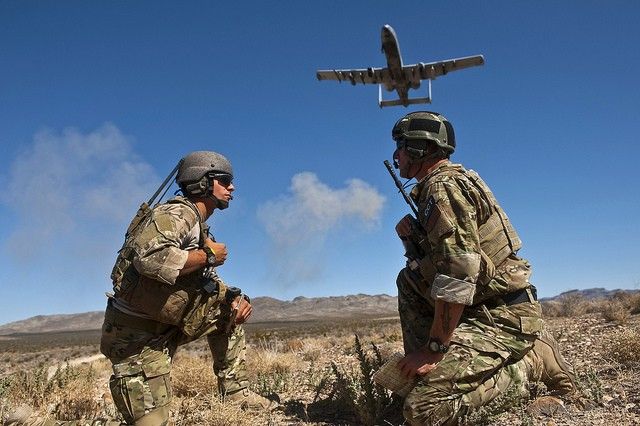 |
| Sometimes nothing else will do |
The two primary remaining cases that call for specially designed aircraft are the air superiority role and the close air support role. The US continues to have the dominant air superiority fighter in the world in the F-22 Raptor - that the fleet of Raptors is pitifully small is an important consideration, but it cannot be said that the Air Force is ambivalent about the air superiority role. But here's the problem - the US has been 'at war' for the better part of two decades and has NEVER in that time had to operate in contested airspace. In these kinds of 'permissive' environments, stealth and air-to-air capability are useless, and with troops engaged in daily small-unit combat, effective close air support is critical. And the US Air Force provides tremendously effective CAS using the venerable A-10 Warthog and the AC-130 gunship. Both provide the ability to visually identify where the good guys are and where the bad guys are, and then put devastating fire precisely where it is needed by the troops, even when it's 'danger close'.
Unfortunately, the Air Force did something we are taught not to do from kindergarten. They put all their eggs in one basket, a basket called the F-35 Joint Strike Fighter. Because they are committed to buying about 2500 of the expensive jets, they've had to drastically reduce other procurement programs. They canceled the F-22 program after taking delivery of only 187 airframes. And now, even worse, they are committed to retiring the only dedicated CAS airframe in inventory, the A-10. The Air Force insists they can replace the Warthogs with the F-35 and advanced drones, but that's theory. Real life seems to indicate even they know that's not even close to true.
America has found herself fighting endless wars in the middle east, with both American and allied troops engaged in daily combat across a broad thousand-mile front from Afghanistan to the Horn of Africa. These are all small unit battles fought on the ground with very limited artillery or armor - the quintessential permissive airspace. And despite the rhetoric that has been used to support the elimination of the A-10 from the inventory, the pesky old Warthog just keeps proving too valuable, even necessary to actually do so. The conundrum they face is somewhat ironic - they want to eliminate the A-10, but they fairly obviously won't be able to do so until the US can free itself from these endless decades-long conflicts. As long as we are engaged in this endless "forever war", the A-10 and the AC-130 are going to have to be there, supporting the infantry on the ground.
...
They put all their eggs in one basket, a basket called the F-35 Joint Strike Fighter.
ReplyDeleteIt made the M.I.C. happy, though. Priorities!
~
P.S. I don't have drone technology...I'm relying on older tech (a 2nd floor window, also a tripod and remote shutter).
ReplyDelete~